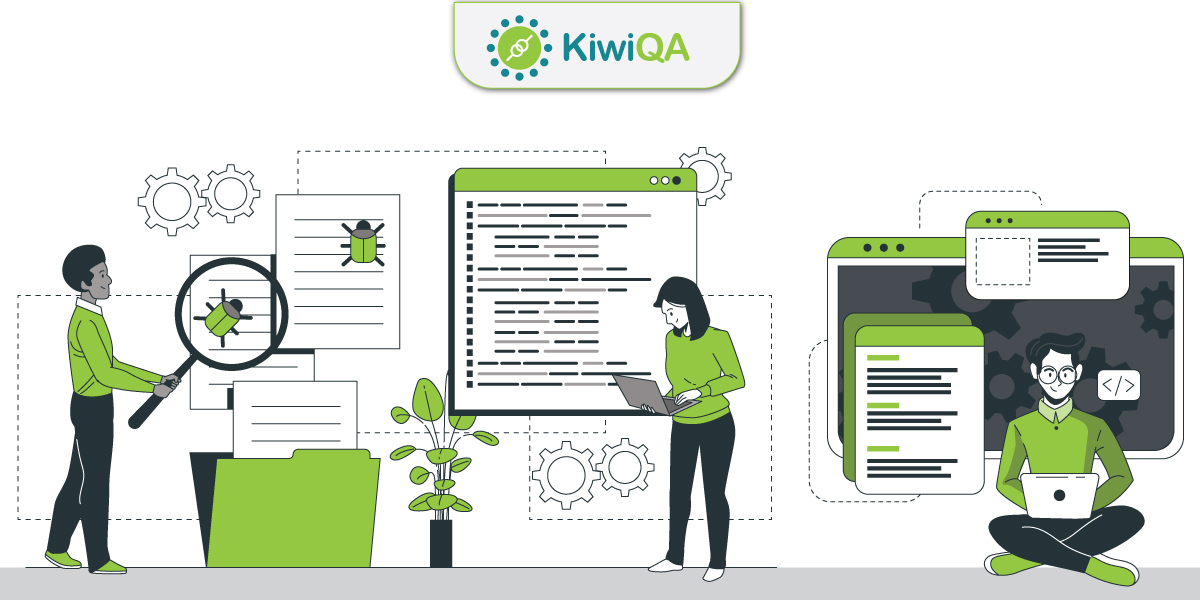The software development and testing market is evolving at a rapid pace, largely due to the advent of technologies like Machine Learning (ML), AI(Artificial Intelligence), and more. Though the shift is more evident in the product development space, the fact is that software testing is no less of an alien to these technologies.
Automation testing – an integral part of the software testing cycle, involves development, maintenance, and execution of test scenarios. 100% automation is a myth which is why QA teams opt for a hybrid testing strategy (i.e. a mix of manual and automated testing).
Since writing automated tests requires technical or coding expertise, manual testing teams cannot be a part of the exercise. However, this is a thing of the passé since low code/no code automation tools makes it easy to come up with automated tests without writing even a single line of code!
As per reports[1], the low code (or no code) development & testing market is expected to reach $3.97 billion by 2027. The exponential growth of no code or low code will be witnessed across different domains – healthcare, retail, transportation, logistics, and more.
A number of companies, startups as well as large-scale enterprises, are now leveraging the combination of low code and automated testing to expedite the testing process. In this blog, I deep dive into the integral aspects of low code automation – the learnings of which will help teams to navigate on the path to codeless automation.
What is Low Code Test Automation?
Automated testing involves the usage of tools (or frameworks) for automating the test scenarios. However, the tester or QA engineer needs to have some prior understanding about the programming language used for writing the scenarios. If you are using Selenium, you might have to use either Java or JavaScript or Python or any of the other Selenium-supported languages to come up with valid test scenarios. Manual testers might not be able to run automated tests with the above strategy.
Now flip the tables around! Low code (or codeless) automation platforms let you automate processes in the application with little or no coding knowledge. Automating the testing of business processes becomes extremely easy with low code automated testing tools. The underlying logic and usage of visual modules makes the usage of low code automation tools a delight.
Even non-technical personnel can also make use of low code tools to come up with meaningful test scenarios. Many code-based automation testing platforms also provide integration with codeless automation testing tools. Such a collaboration helps in leveraging the capabilities of both the platforms, thereby helping run automated tests at scale!
Many companies are now opting for SaaS based codeless automation testing tools in order to reduce the technical debt. Low code automation testing provides the ideal opportunity for teams to foster the potential of cloud-based low code tools, while involving more personnel in the automated testing journey.
AccelQ, Kobiton, TestRigor, and Virtuoso are some of the best AI-powered code-less automated testing tools.
Since there are a plethora of low code automation testing tools in the market, it is recommended to partner with a software testing company that has the expertise of working with different tools. The association will be helpful in choosing the best tool (or platform) that is aligned to the project budget and requirements.
Also Read – Dos and Don’ts of Test Automation
Benefits Of Low Code Automation
Now that I have touched upon the basic aspects of low code automation and portrayed the major reasons to onboard an experienced software testing services company, let me walk you through the prominent benefits of low code automated testing.
1. Significant Cost Savings
Almost all the major low code automated software testing tools are powered using Artificial Intelligence (AI). The user-friendly interface makes it easy to write simple and maintainable test scenarios. Cloud-based no code (or low code) automation testing tools deliver cost savings upto 60~70 percent.
The test scenarios that require self healing, involve collective team intelligence, or involve performing cross-browser (or cross-platform) tests can be realized using low code automated testing tools. This eventually helps in reducing the infrastructure costs and improves productivity.
2. Leverage potential of Integrations
All the low code automated software testing tools support integration with other cloud-based code-based automated testing tools. This enables the testers to leverage the potential of both the categories of tools.
For example, codeless automation testing tools like TestSigma, Katalon, QMetry, etc. support integration with major code-based automation testing platforms. Such an integration helps in improving the test coverage, thereby helping build a better quality product.
Also Read – Difference Between Manual Testing and Automation Testing
3. Major Resource Savings
If you are someone coming from the code-based automation testing background, you would know the potential of Gherkin. The Gherkin language lets you come up with test scripts that are written in simple business readable language. Every person in the team can contribute to automated testing if the test scenarios are created using Gherkin.
Similar opportunities are opened up by low code automated software testing tools. The test scenarios are created using simple English-like sentences. Hence, personnel with varied experience and domain expertise can participate in the creation and maintenance of the test scenarios. In a nutshell, anyone can become a tester by utilizing the benefits offered by codeless automation testing tools.
The burden of writing complex code-based automated test scenarios is removed from the process. The entire exercise results in expediting product quality by involving the entire team in the quality enhancement process.
4. Reduction in Technical Debt
In most projects, the development and test teams are overwhelmed thereby resulting in a reduction of their productivity. Maintenance of the existing in-house test infrastructure can turn out to be a costly exercise. These lingering problems can be solved by using AI-powered low code automation testing tools.
By embracing low code automation, companies no longer need to invest in the continual maintenance of in-house infrastructure. This results in a major reduction in technical and infrastructure debt.
The cost of manual testing also reduces significantly when codeless automated testing is used in the best manner. On the whole, reduced downtime and reduced technical debt are the major benefits of low code automated software testing.
Also Read – 10 Things You Should Know Before Starting Automation Testing
Conclusion
Codeless development and testing is gaining significant traction in every domain. Since low code automated software testing tools do not involve code development, personnel from different departments can participate in the testing process.
The culture of high quality and shift-left testing can be created by embracing low code automated testing. Product enterprises can leverage the capabilities of software testing companies in the UK, US, and other countries for expediting product delivery at scale!


![Low Code Automated Software Testing [Guide] 1 Software QA Outsourcing](https://kiwiqa.co.uk/wp-content/uploads/2022/01/Software-QA-Outsourcing03_1.jpg)
![Low Code Automated Software Testing [Guide] 2 Mobile App Testing](https://kiwiqa.co.uk/wp-content/uploads/2022/01/Mobile-App-Testing00.jpg)
![Low Code Automated Software Testing [Guide] 3 Manual Testing](https://kiwiqa.co.uk/wp-content/uploads/2022/01/Manual-Testing3.jpg)







Comments are closed.